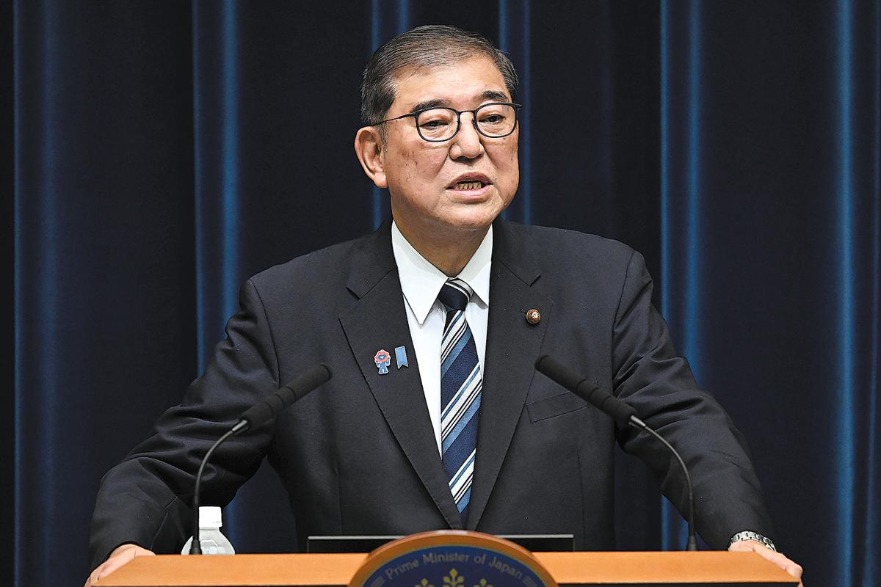RCEP to bring more vitality and certainty
Forum: Hong Kong expected to play part in RCEP market
By Wang Keju in Haikou | China Daily | Updated: 2024-05-19 23:52

The Regional Comprehensive Economic Partnership — a free trade agreement that has created the world's largest trading group — is sending a strong signal in favor of open markets, fair competition and rules-based trade at a time when protectionist tendencies and trade tensions are posing challenges to stable supply chains and global economic recovery, officials and experts said on Sunday.
China, as the largest economy within the RCEP framework, will work closely with other member countries to unlock the full potential of the agreement and ensure that its benefits are shared by all for win-win cooperation, they said at the fourth edition of the RCEP Media and Think Tank Forum in Haikou, Hainan province.
The RCEP, with its vast regional population, substantial GDP and significant volume of goods trade, each accounting for approximately 30 percent of the global share, took full effect in June last year among its 15 signatory countries — China, Australia, Japan, New Zealand, South Korea and the 10 member states of the Association of Southeast Asian Nations.
Looking ahead, the RCEP is set to unleash more vitality as member countries make significant strides in enhancing connectivity and boosting trade and investment, said Hu Kaihong, a member of the Affairs Council of the Publicity Department of the Communist Party of China Central Committee.
Thanks to provisions such as tariff reductions, cumulative rules of origin and streamlined customs procedures, the agreement has facilitated the continuous entry of high-quality products from member countries into the Chinese market over the past few years.
Last year, the total import and export volume between China and other RCEP members reached 12.6 trillion yuan ($1.7 trillion), statistics from the General Administration of Customs showed. This accounted for 30.2 percent of China's total foreign trade, a 5.3 percent increase compared with 2021, the year before the agreement came into force.
Yin Libo, vice-governor of the Hainan provincial government, said the agreement's multiple effects of trade creation, growth promotion and job generation have brought a rare sense of certainty to a world grappling with mounting uncertainties.
Hainan, in particular, will capitalize on the combined advantages of the RCEP and the policies of its free trade port, to foster a base for Chinese companies venturing into international markets and a hub for overseas enterprises seeking entry into the Chinese market, Yin said.
Last year, Chinese enterprises enjoyed a reduction of import duties worth 2.36 billion yuan within the RCEP framework. Importing enterprises based in the RCEP trading partners' economies also benefited immensely from preferential treatment, to the tune of 4.05 billion yuan, data from the Ministry of Commerce showed.
Qu Yingpu, publisher and editor-in-chief of China Daily, said the world today is far from being peaceful, with conflicts and disputes arising one after another. Narratives of a new Cold War or confrontation are all too common, and there are those who advocate "decoupling and severing supply chains" and creating "small yard, high fence", he said.
The World Trade Organization said in April that it expected global trade in goods volume to increase 2.6 percent this year, indicating a decrease of 0.7 percentage point compared with the prediction made in October. It warned that geopolitical tensions continue to pose a significant risk to its outlook, as signs of trade fragmentation rise.
The RCEP must further boost the utilization of its rules, upgrade rules and standards, and broaden the scope of cooperation, Qu said. By doing so, it can continue to unleash policy dividends and strengthen the efforts in building a better world, he added.
The RCEP is projected to drive an annual increase of $186 billion in global GDP by the year 2030, according to the Washington-based Peterson Institute for International Economics.
Chi Fulin, president of the China Institute for Reform and Development, said that due to the short implementation time and low awareness of enterprises, the rate of some members' use of RCEP rules is still low.
Speeding up improvement of the rate of utilization of RCEP rules will further enhance the vitality of the large regional market, he said.
With the Hong Kong Special Administrative Region playing a key role as an international trade center, international financial center and international arbitration center, its accession to the RCEP, if it becomes a reality, will play a unique role in promoting the RCEP regional market, Chi said.
At the same time, research and communication on issues that concern India should be strengthened to attract the South Asian country's interest in rejoining the RCEP, he added.
The forum, themed "Shared Benefits, Win-win Cooperation" this year, was held by the Publicity Department of the CPC Hainan Provincial Committee, China Daily and the China Institute for Reform and Development.
























